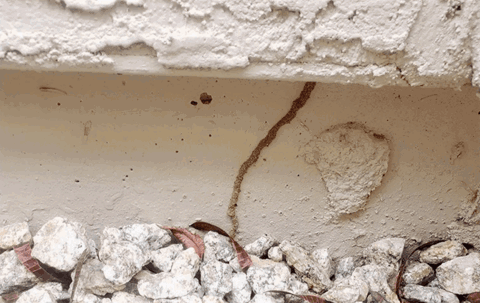The state of Florida contains 20 known termite species and has the largest termite species diversity of any mainland state in the U.S. This high diversity of termite species means that it is difficult to pinpoint an exact, all-encompassing termite season in Florida, as many species swarm at different times of the year. Although we typically associate March through June as the main months buzzing with termite activity, this does not mean they are only active during that period. Termites remain a threat year-round to homeowners in Florida. You can remain vigilant against termites year-round by monitoring your property for termite hot spots, as well as following some tips that will help prevent attracting termites in the first place.
Termite Hot Spots to Monitor Around Your Home
1. Check Tree Stumps and Dead Trees
Tree stumps and dead trees are perfect locations for termite colonies. These locations are able to provide both shelter and a food source to termites, and can easily become infested. Monitor tree stumps or any dead trees or branches on your property for any sort of termite activity or presence.
Ultimately, removing any tree stumps or dead trees if possible will help eliminate any potential threats of termites making a home there.
2. Be Sure Rain Gutters are Unclogged
House gutters should be clear of all debris and buildup.
When leaves begin to decay, termites are actually able to smell this change in the leaves from far away. Termites are attracted to dead and decayed matter since it is easier to eat and break down into cellulose.
Making sure that rain gutters are unclogged will ensure that no termites are munching on tasty dead leaves right near your home.
Gutter waterspouts should be aimed away from your home.
3. Check the Exterior of Your Home for Mud Tubes
One of the biggest telltale signs of termite activity is the mud tubes they use to travel from their colony.
Mud tubes are made by termites as a channel to travel through when exploring (or infesting) areas away from the colony.
To see if mud tubes are currently active, try breaking off a piece to see if you expose any live termites. Even if you do not, check back periodically to see if the piece of mud tube you broke off appears fixed or restored, which would be a sign of current termite activity.
4. Mulch
The moisture that mulch provides makes it very enticing to termites, who are attracted to anything and everything damp. Mulch near the home can serve as an access route to your home's foundation for termites. Avoid piling mulch directly against the foundation of your home.
5. Firewood Stacks
Firewood should be kept at least 5 feet away from your house as a preventative measure. If firewood is stacked directly against your home, it could be a potential way to attract termites to your house's foundation.
Interested in seeing where the various termite species are distributed in Florida? The Ft. Lauderdale extension of the University of Florida IFAS has been working on a termite species distribution map for the state of Florida, showing where and what species of active termites were found

